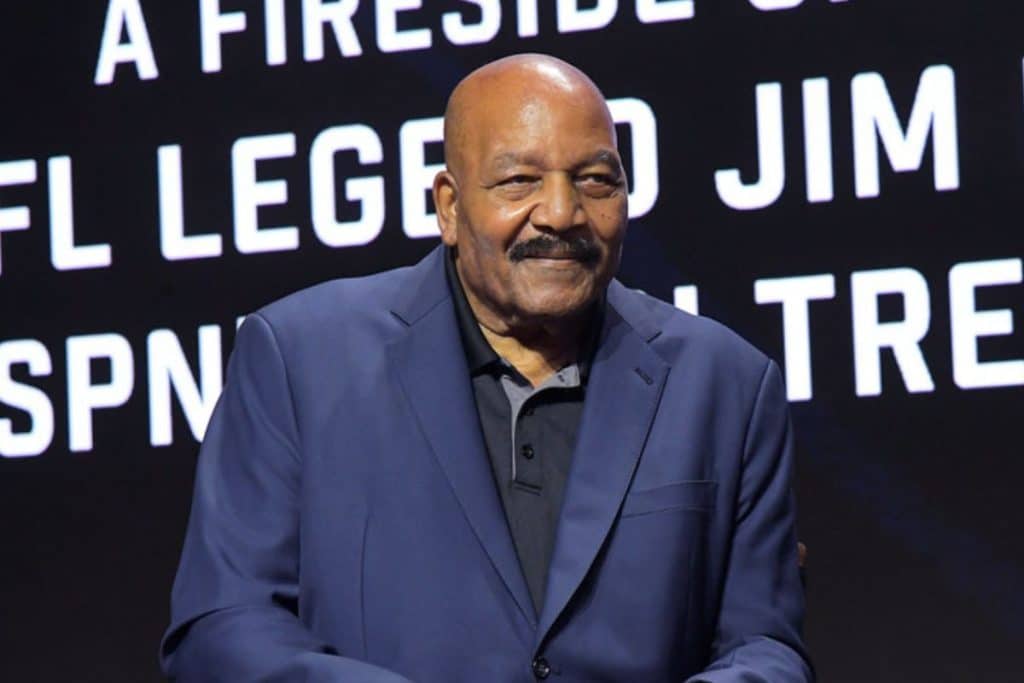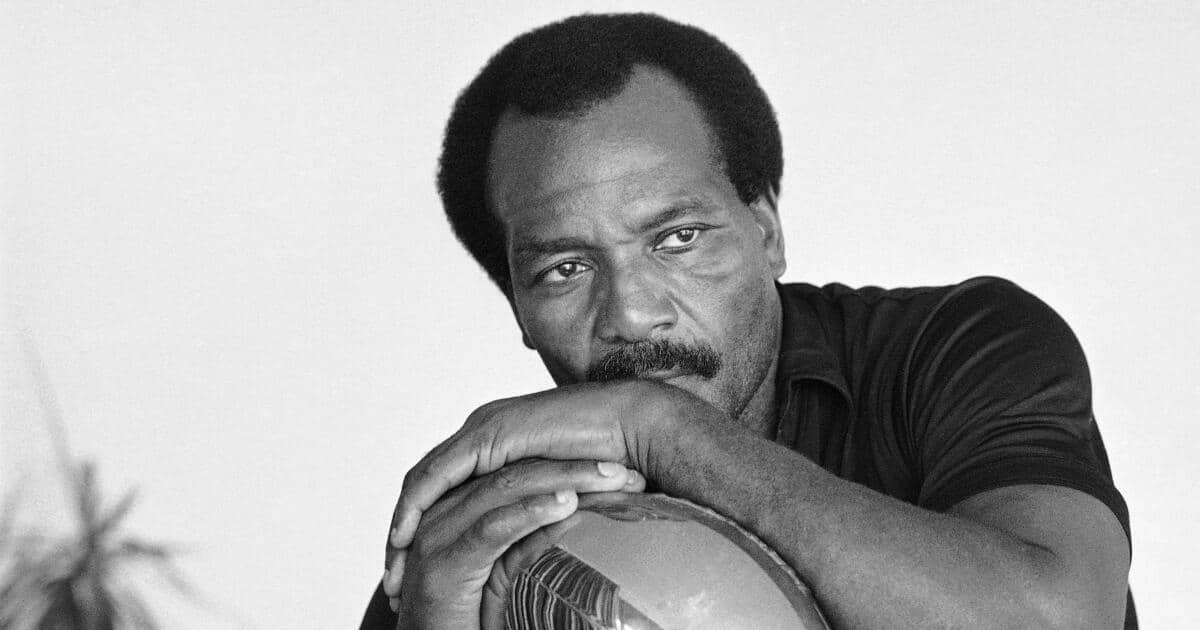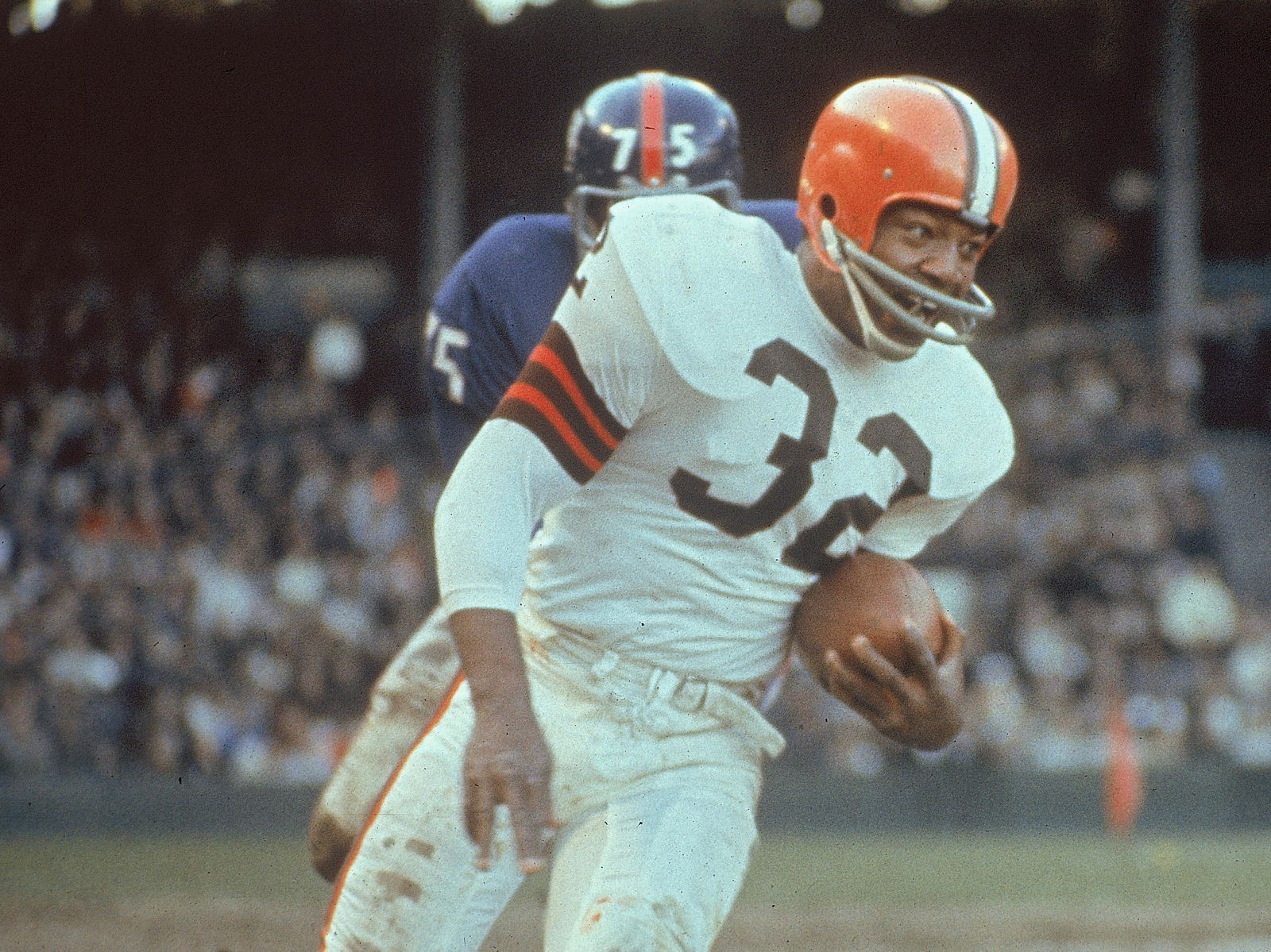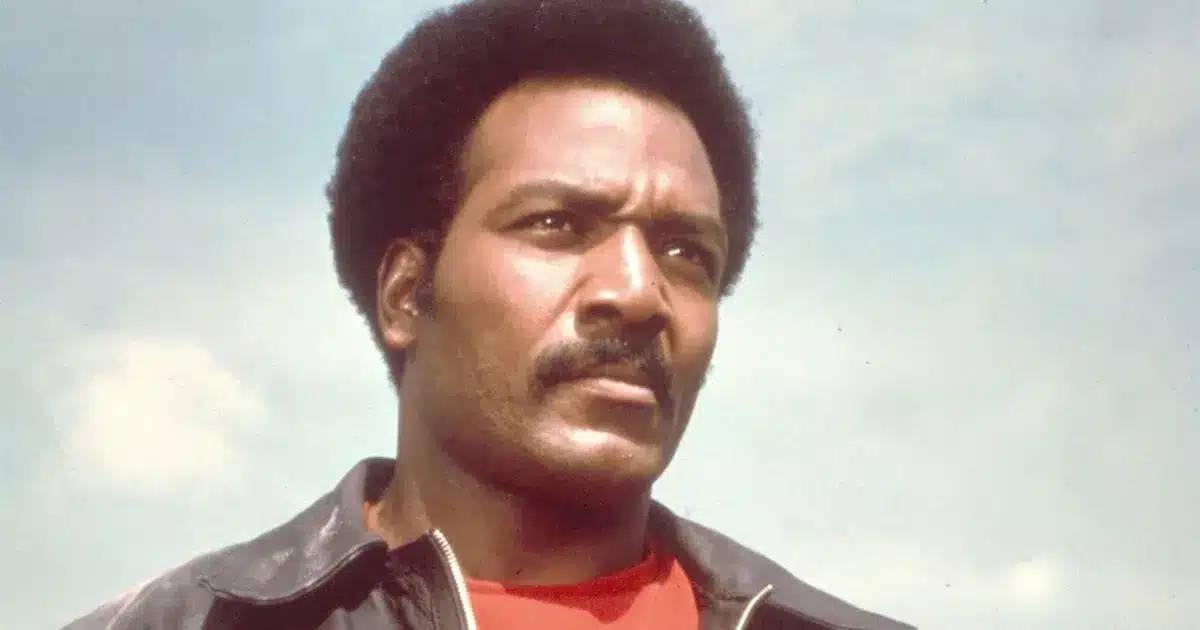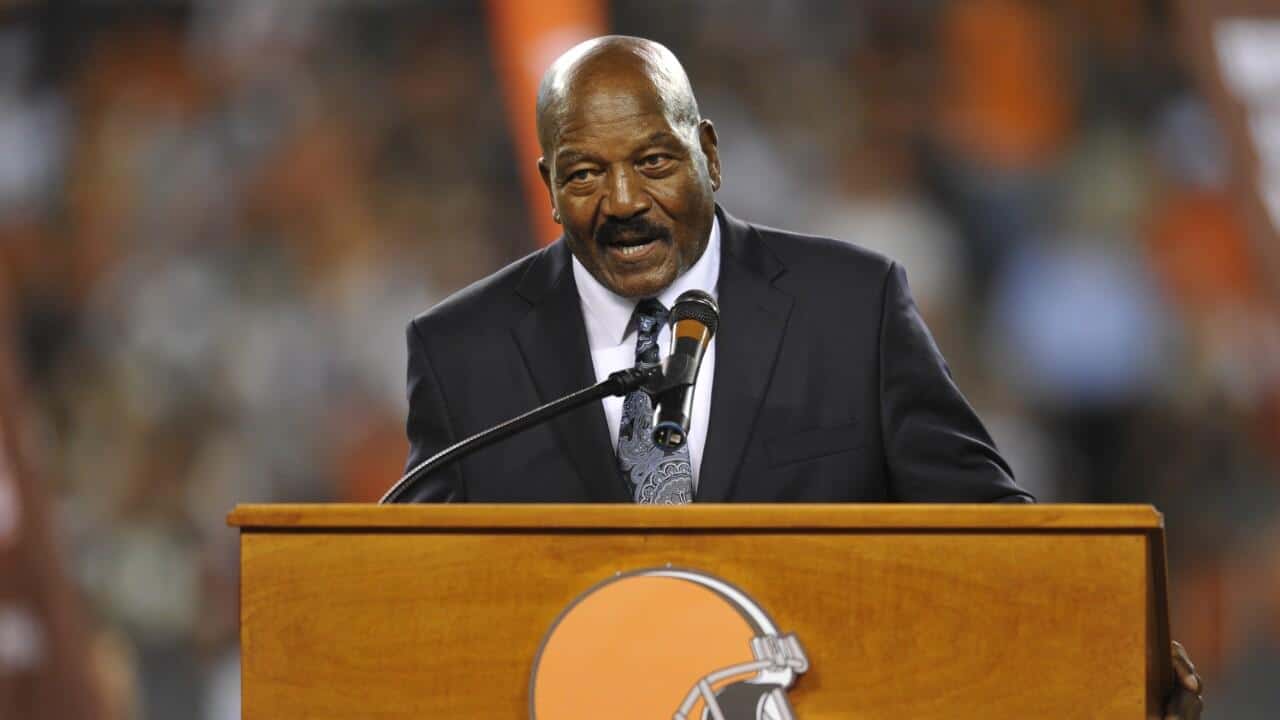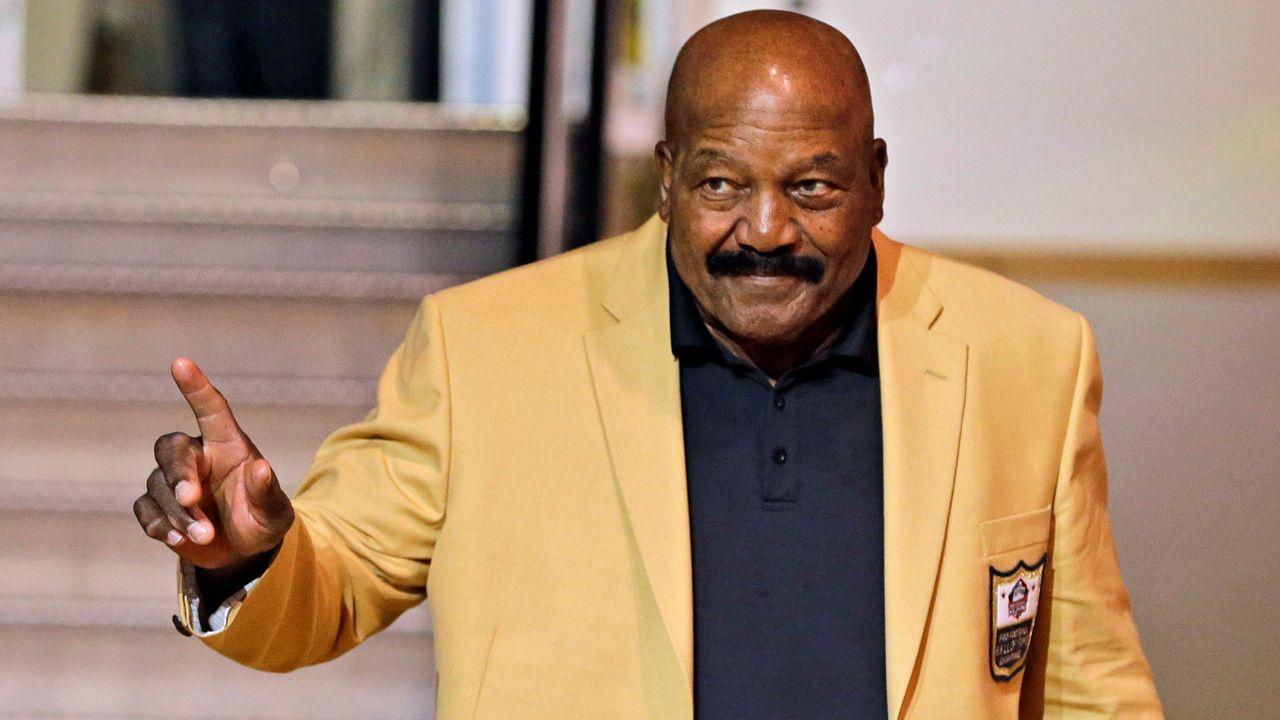Jim Brown’s name connects with football fans and civil rights advocates alike. A legendary athlete and complex figure, Brown’s impact extended far beyond the football field.
This article will delve into the multifaceted life of Jim Brown, exploring his unparalleled athletic career, his transition to Hollywood, and his significant role in the civil rights movement.
We’ll examine his lasting influence on sports and society while also addressing the controversies that surrounded him.
Join us as we uncover the story of Jim Brown – a man whose legacy is as complicated as it is influential.
Who is Jim Brown?
Jim Brown stands as a towering figure in American sports and culture. His impact reaches far beyond the football field, making him a true icon of the 20th century.
Widely considered one of the finest running backs in NFL history, Brown’s influence extends beyond his athletic prowess, shaping him into a cultural icon who left an indelible mark on American society.
Brown played for the Cleveland Browns from 1957 to 1965, dominating the league in rushing yards for eight out of his nine seasons.
He earned the NFL Most Valuable Player (MVP) title three times and led the Browns to an NFL championship in 1964.
After retiring at the height of his football career, Brown moved to Hollywood, breaking ground as one of the first black action heroes in cinema.
Early Life and Background
Jim Brown’s journey began on February 17, 1936, in St. Simons Island, Georgia, during a time when racial tensions were a harsh reality in America.
His early years were shaped by the strong women in his life – his grandmother and his mother, Theresa Brown.
They infused in him the values of hard work and determination that would define his character throughout his life.
His father, Swinton Brown, was a professional boxer, potentially planting the seeds of athletic pursuit and competitive spirit in young Jim.
The close-knit community of St. Simons Island provided a supportive backdrop for Brown’s early years.
However, at the age of eight, his life took a significant turn when he moved to Manhasset, New York. This transition presented new challenges, including adapting to a different environment and confronting racism head-on.
It was at Manhasset Secondary School where Brown’s exceptional athletic talents began to shine. He earned an impressive 13 letters across multiple sports – football, lacrosse, baseball, basketball, and track.
Brown’s high school years were a testament to his extraordinary abilities, foreshadowing the remarkable achievements that lay ahead.
Career Beginnings and Breakthrough
Jim Brown’s professional career began with an outstanding college football performance at Syracuse University, which led to his selection in the NFL Draft.
Brown attended Syracuse University from 1953 to 1956, where he became a standout player on the football team.
As a senior in 1956, he was a consensus first-team All-American and finished fifth in the Heisman Trophy voting, showcasing his elite athletic abilities.
In 1957, Brown was selected in the first round of the NFL Draft by the Cleveland Browns as the sixth overall pick, marking the beginning of his professional career.
His transition to the NFL was smooth, demonstrating his readiness to compete at the highest level.
In his rookie season, Brown made an immediate impact by setting a record for rushing yards in a single game with 237 yards against the Los Angeles Rams, a record that stood for 14 years.
He was named the NFL Rookie of the Year, solidifying his reputation as a rising star in professional football.
Throughout his early career, Brown led the league in rushing yards during his first season, establishing himself as a dominant force in the NFL.
His combination of speed, strength, and agility redefined the running back position and earned him accolades, including multiple Pro Bowl selections.
Notable Achievements and Records
| Achievement | Year(s) | Details |
|---|---|---|
| NFL Champion | 1964 | Led the Cleveland Browns to victory in the NFL Championship. |
| NFL Most Valuable Player (MVP) | 1957, 1958, 1965 | Recognized as the league’s most valuable player three times. |
| NFL Rookie of the Year | 1957 | Awarded for outstanding performance in his rookie season. |
| First-team All-Pro | 1957-1961, 1963-1965 | Selected as a first-team All-Pro in eight seasons. |
| Second-team All-Pro | 1962 | Recognized for excellence as a second-team All-Pro. |
| Pro Bowl Selections | 1957-1965 | Invited to the Pro Bowl every season of his career. |
| NFL Rushing Yards Leader | 1957-1961, 1963-1965 | Led the league in rushing yards for eight out of nine seasons. |
| NFL Rushing Touchdowns Leader | 1957-1959, 1963, 1965 | Led the league in rushing touchdowns five times. |
| NFL Scoring Leader | 1958 | Finished as the highest scorer in the NFL for that season. |
| Total Rushing Yards | 12,312 | Held the record for most career rushing yards at retirement. |
| Rushing Average | 5.2 yards per carry | Only player to average over 100 rushing yards per game for his career. |
Personal Life and Relationships
Jim Brown’s personal life was marked by two marriages, multiple children, and a series of legal challenges that often drew public attention. His first marriage was to Sue Brown (née Jones) in September 1959.
The couple had three children together, including twins born in 1960 and a son born in 1962. However, this union faced difficulties, and in 1972, Sue filed for divorce, citing “gross neglect.”
The divorce settlement required Brown to pay alimony and child support, highlighting the financial responsibilities that came with the end of the relationship.
In 1997, Brown entered his second marriage with Monique, with whom he had two more children.
This marriage seemed to bring a more stable phase to his personal life compared to his first, suggesting personal growth and maturity.
In total, Brown had five children from his two marriages. His relationships with his children have been both public and private, reflecting the complexities of his personal life.
These relationships were likely influenced by Brown’s high-profile career and the challenges he faced in his personal life.
Influence on The Sports and Entertainment Industry
Jim Brown’s influence extended far beyond the football field, reshaping perceptions of African Americans in sports and film.
As a civil rights activist, he encouraged fellow athletes to use their platforms for advocacy, participating in pivotal events like the 1967 Cleveland Summit.
His transition to Hollywood broke racial barriers, as he became one of the first black action heroes, starring in films like “The Dirty Dozen” and “100 Rifles.”
Brown’s role in “100 Rifles” featured one of the first interracial love scenes in a major Hollywood film, marking a milestone in cinematic representation.
His impact as a cultural icon influenced subsequent generations of athletes and actors to engage in activism and take on diverse roles.
Brown’s contributions to both civil rights and the entertainment industry solidified his status as a multifaceted icon whose legacy transcends sports.
Charitable Work and Social Contributions
Jim Brown’s charitable work and social contributions were significant aspects of his post-athletic career.
He founded the Amer-I-Can Foundation in 1988 to help at-risk youth and gang members, and established the Black Economic Union to promote minority-owned businesses.
Brown implemented youth programs, facilitated the Watts Truce between rival gangs in Los Angeles, and advocated for economic empowerment within African American communities.
His initiatives emphasized self-sufficiency, entrepreneurship, and community investment. Brown secured grants and loans for community projects, often collaborating with organizations like the Ford Foundation.
He used his platform to raise awareness about social issues and civil rights, participating in public speaking engagements and community events.
Brown’s commitment to giving back established a lasting legacy, influencing future generations and making him a role model for athletes and activists.
His work in communities earned widespread respect, demonstrating the power of using one’s influence for positive social change.
Controversies and Challenges Faced
Jim Brown’s life was marked by significant controversies, particularly involving legal issues and allegations of violence against women.
These incidents have complicated his legacy as a sports icon and civil rights activist.
Brown faced multiple arrests and allegations of domestic violence from the 1960s to the 1990s. Notable cases include his 1965 acquittal for assault charges and dismissed rape allegations in 1985.
A 1999 incident led to charges of making threats against his wife, resulting in probation and community service.
These controversies have created a polarized public perception of Brown. While many admire his athletic achievements and civil rights work, others criticize his alleged actions towards women.
This duality in Brown’s public image has sparked discussions about accountability for public figures and societal attitudes towards domestic violence.
The complexities of Brown’s life raise important questions about how society balances the achievements of influential figures with their personal failings, particularly in cases involving violence against women.
Conclusion
Jim Brown’s life and legacy are as complex as they are influential.
His unparalleled athletic achievements, groundbreaking acting career, and impactful civil rights work have left an excellent mark on American culture.
Yet, his personal controversies, particularly allegations of violence against women, cannot be overlooked.
Brown’s story prompts us to reflect on accommodating public accomplishments with private failings.
It challenges us to consider the complicated nature of human beings and the complexities of societal progress.
As we look back on Jim Brown’s life, we’re reminded of the power of using one’s platform for social change, the importance of accountability, and the ongoing struggle for equality and respect for all individuals.
What are your thoughts on Jim Brown’s legacy? How do you think we should approach such complex figures in our shared history?


